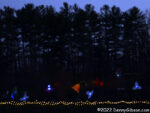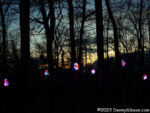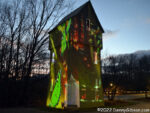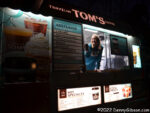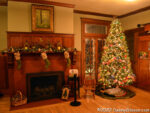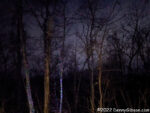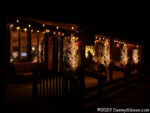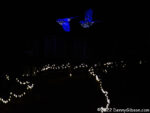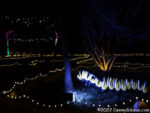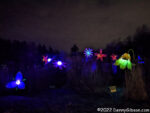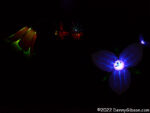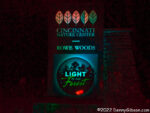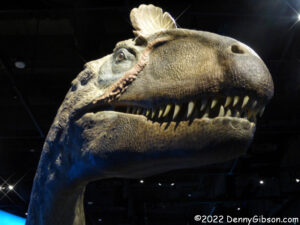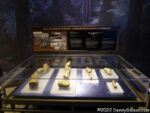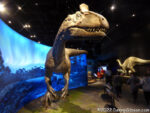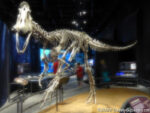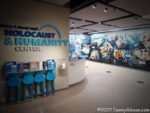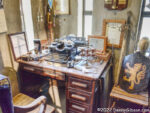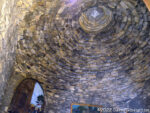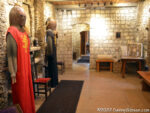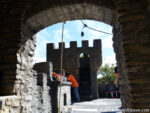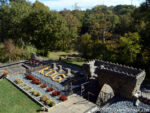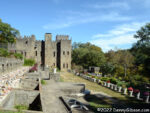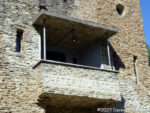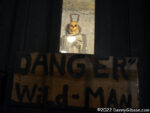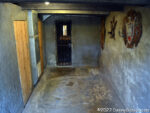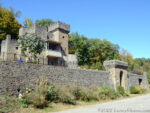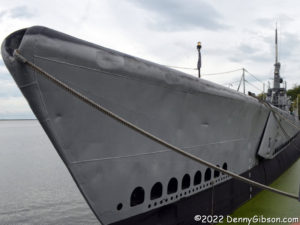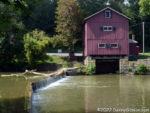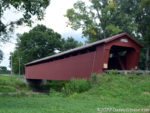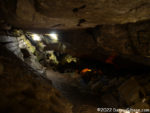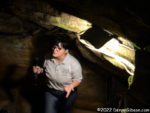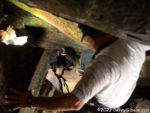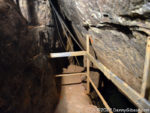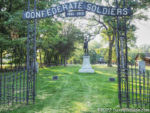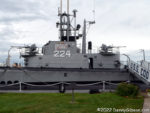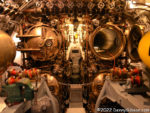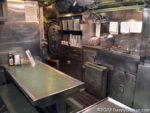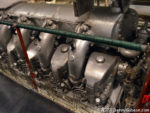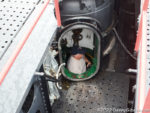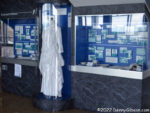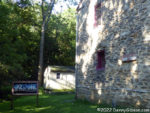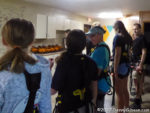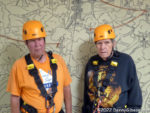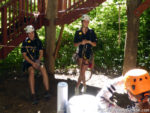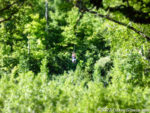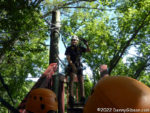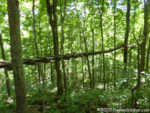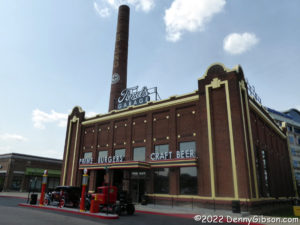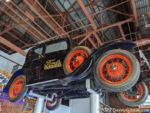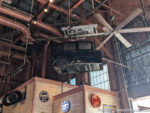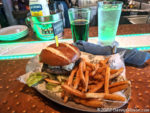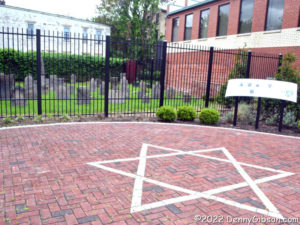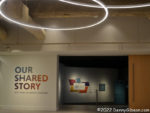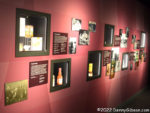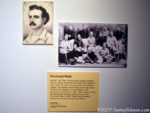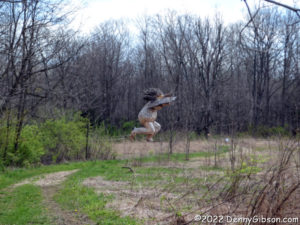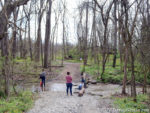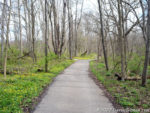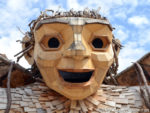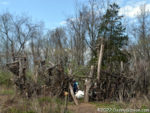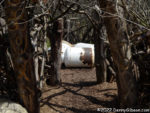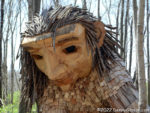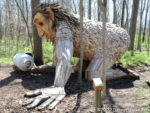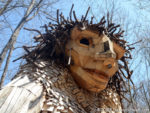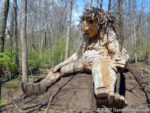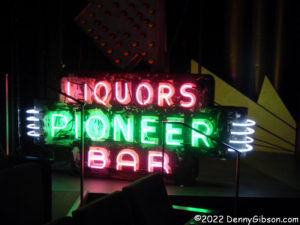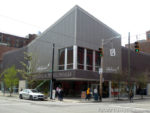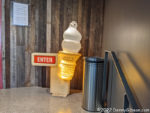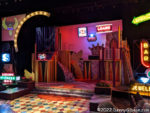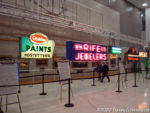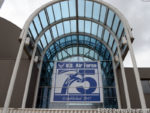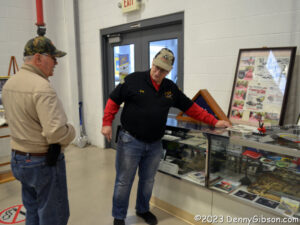 After talking about it for quite some time, my friend Terry and I finally headed off to Ohio Caverns on Wednesday. Since touring the caverns would only take an hour or so, we decided a stop at the Champaign Aviation Museum in nearby Urbana would help make the trip worthwhile. As we looked over items displayed in the lobby, Pat appeared and offered us a guided tour. In addition to filling us in on each of the airplanes on display, Pat explained the extensive restoration work that goes on here and took us into areas where that work was taking place. Later arrivals joined us, and at one point there were six visitors in our little group. What we thought would be a brief interlude turned out to be a two-plus hour stop that was both entertaining and educational.
After talking about it for quite some time, my friend Terry and I finally headed off to Ohio Caverns on Wednesday. Since touring the caverns would only take an hour or so, we decided a stop at the Champaign Aviation Museum in nearby Urbana would help make the trip worthwhile. As we looked over items displayed in the lobby, Pat appeared and offered us a guided tour. In addition to filling us in on each of the airplanes on display, Pat explained the extensive restoration work that goes on here and took us into areas where that work was taking place. Later arrivals joined us, and at one point there were six visitors in our little group. What we thought would be a brief interlude turned out to be a two-plus hour stop that was both entertaining and educational.
 I had visited the museum in 2012 during the Doolittle Raid’s 70th anniversary celebration at the Air Force museum in Dayton. In the blog entry associated with that report, I mentioned that I had taken some pictures here but did not use them because I was more focused on the events in Dayton. At that time, the C-47 pictured at left was a rather new acquisition. Here‘s a picture of it that was taken then.
I had visited the museum in 2012 during the Doolittle Raid’s 70th anniversary celebration at the Air Force museum in Dayton. In the blog entry associated with that report, I mentioned that I had taken some pictures here but did not use them because I was more focused on the events in Dayton. At that time, the C-47 pictured at left was a rather new acquisition. Here‘s a picture of it that was taken then.
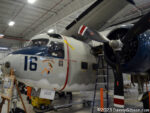
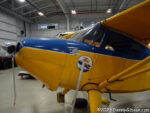
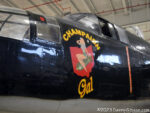 Champaign Gal is the museum’s fully restored B-25. I saw her fly in 2012 along with about twenty others. The Stinson 10A is one of several such planes used to scout for submarines during WWII. Although there is no absolute proof, there is strong evidence that this plane was responsible for sinking a German submarine using the small single bomb that the scout planes carried. The third plane is a Viet Nam era Grumman C-1A from the carrier Lexington.
Champaign Gal is the museum’s fully restored B-25. I saw her fly in 2012 along with about twenty others. The Stinson 10A is one of several such planes used to scout for submarines during WWII. Although there is no absolute proof, there is strong evidence that this plane was responsible for sinking a German submarine using the small single bomb that the scout planes carried. The third plane is a Viet Nam era Grumman C-1A from the carrier Lexington.
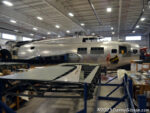
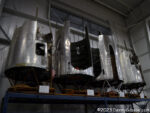
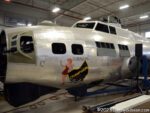 A phenomenal amount of restoration takes place here with the biggest current project being this B-17 named Champaign Lady. The engine nacelles have been completed and are literally waiting on the shelf for future mounting. The ball turret is also ready for installation. It was one of the items we looked over in the lobby. This is a massive project that was begun in 2005. Here is a picture from my 2012 visit.
A phenomenal amount of restoration takes place here with the biggest current project being this B-17 named Champaign Lady. The engine nacelles have been completed and are literally waiting on the shelf for future mounting. The ball turret is also ready for installation. It was one of the items we looked over in the lobby. This is a massive project that was begun in 2005. Here is a picture from my 2012 visit.
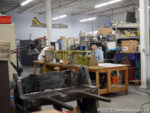
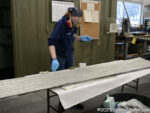 Restoring an airplane like the B-17 involves salvaging parts from other airplanes, fabricating many other parts, and lots of volunteers working lots of hours. Pat told us that more than 80% of Champaign Lady will have been fabricated here when she is complete.
Restoring an airplane like the B-17 involves salvaging parts from other airplanes, fabricating many other parts, and lots of volunteers working lots of hours. Pat told us that more than 80% of Champaign Lady will have been fabricated here when she is complete.
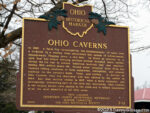
 It didn’t take long to get to the caverns from the museum. They are open year-round but this is not their busiest season. When tour time came around, we were the only paying customers so we basically had a personal guide.
It didn’t take long to get to the caverns from the museum. They are open year-round but this is not their busiest season. When tour time came around, we were the only paying customers so we basically had a personal guide.
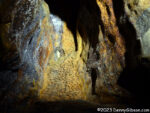
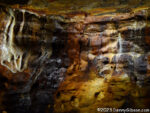
 Discovered in 1897, Ohio Caverns is the largest cave system in Ohio and bills itself as “America’s Most Colorful Caverns”. Color does start showing up early in the tour.
Discovered in 1897, Ohio Caverns is the largest cave system in Ohio and bills itself as “America’s Most Colorful Caverns”. Color does start showing up early in the tour.
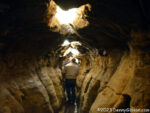
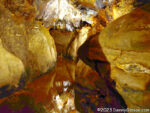
 During the summer, a choice of two tours, Historic and Natural Wonder, are offered. The Winter Tour includes highlights of both. We passed many interesting rock and mineral formations before entering this narrow passage but they became more abundant once we were through it.
During the summer, a choice of two tours, Historic and Natural Wonder, are offered. The Winter Tour includes highlights of both. We passed many interesting rock and mineral formations before entering this narrow passage but they became more abundant once we were through it.
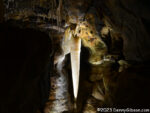
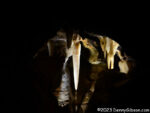 This is the Crystal King, the largest stalactite in Ohio. Our first view of was through a passage blocked by chains then the winding passage we were following passed quite a bit closer to it.
This is the Crystal King, the largest stalactite in Ohio. Our first view of was through a passage blocked by chains then the winding passage we were following passed quite a bit closer to it.
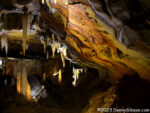
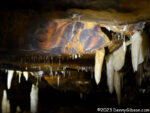
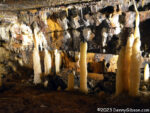 I admit that I was not very attentive and don’t remember the names of any of the “rooms” we passed through or the formations they contained. Names might help with History but they really aren’t required to appreciate Natural Wonder.
I admit that I was not very attentive and don’t remember the names of any of the “rooms” we passed through or the formations they contained. Names might help with History but they really aren’t required to appreciate Natural Wonder.
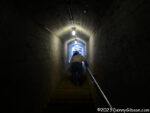 The website says there are 38 steps going in and 60 coming out. The path between them is close to level and the distance below the surface is affected mostly by variations in the height of the hill above the cave. The guide had to tell us when we reached the maximum 103 feet below ground because there’s really nothing distinctive about it. Going down those entrance steps barely registered. Going up those exit steps, however, definitely did. Guys our age just seem to naturally notice things like that.
The website says there are 38 steps going in and 60 coming out. The path between them is close to level and the distance below the surface is affected mostly by variations in the height of the hill above the cave. The guide had to tell us when we reached the maximum 103 feet below ground because there’s really nothing distinctive about it. Going down those entrance steps barely registered. Going up those exit steps, however, definitely did. Guys our age just seem to naturally notice things like that.



